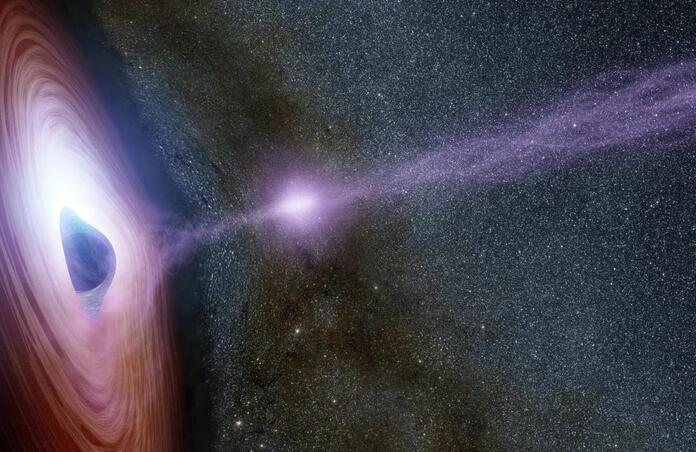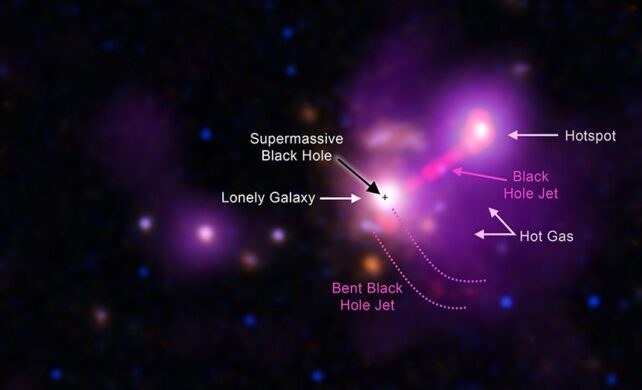Cannibal galaxy appears to have eaten all its companions

A team of astronomers led by Valentina Missaglia, a postdoctoral astrophysicist at the University of Turin have discovered a distant lone galaxy in a region where we expect to observe at least a dozen. The lack of milky-way-sized companions points towards a cannibal galaxy, which has engulfed its friends over time.

The solo galaxy named 3C 297 is located 9.2 billion light years away. 3C 297 contains an active galactic nucleus called a quasar at its centre, which comprises a black hole that accretes material, resulting in the emission of powerful radio jets from its poles. Using data from NASA's Chandra X-ray Observatory, the team observed three characteristics from the interesting lone galaxy which are usually indicators of a galaxy cluster. First, the X-ray data suggests that the galaxy is surrounded by large amounts of hot gas, a feature rarely seen outside of galaxy clusters. In addition, the radio jet emitted from the galaxy's supermassive black hole had created a bright X-ray source seen 140,000 light years away, which means that the jet crashed into the gas around the galaxy, causing it to heat up and emit X-rays. Lastly, one of the jets appeared bent, implying that it has interacted with gas in the intracluster medium.
The bending of the jet was initially observed by the Karl G. Jansky Very Large Array, also reporting 19 galaxies appearing to be in the vicinity of 3C 297. The team turned to data from Gemini Observatory in Hawaii to study the region around the lone galaxy, however, they found that the 19 nearby galaxies are only close in two dimensions, and actually differ greatly in distance from the ravenous 3C 297. Therefore, this galaxy is truly all alone, which leads the team to wonder about how the other galaxies met their demise.
“The question is, what happened to all of these galaxies? We think the gravitational pull of the one large galaxy combined with interactions between the galaxies was too strong, and they merged with the large galaxy. For these galaxies, apparently, resistance was futile." Explains Juan Madrid, assistant professor at the University of Texas Rio Grande Valley and co-author of the study.
Galaxies are continuously evolving and changing due to interactions, and can merge when there are strong forces of attraction. When two galaxies merge, their central black holes also join to form a larger spiral galaxy with a supermassive black hole. However, this process and the role it plays in galactic evolution remains a mystery to astronomers, since many of these events occurred during the early universe, a time that proves difficult to observe with current telescopes.
The team have theorised that this may be a fossil group, the end stage of a galaxy that merges with several others. Fossil groups are not new, and many of these systems have been observed previously, however, not as early in the universe as 3C 297. The previous record holder is located 7.9 billion light years away, making 3C 297 the most distant fossil group seen yet. The young age for such a system suggests that galaxies in the early universe grew faster than we thought, and we may need to revise how merging of galaxy clusters develop.
"It may be challenging to explain how the universe can create this system only 4.6 billion years after the Big Bang," said co-author Mischa Schirmer of the MPIA. "This doesn't break our ideas of cosmology, but it begins to push the limits on how quickly both galaxies and galaxy clusters must have formed."
--
Cover image: Nustar-Caltech (NASA)
Journal source: Valentina Missaglia et al, Powerful Yet Lonely: Is 3C 297 a High-redshift Fossil Group?, The Astrophysical Journal Supplement Series (2022). DOI: 10.3847/1538-4365/ac9f3e
